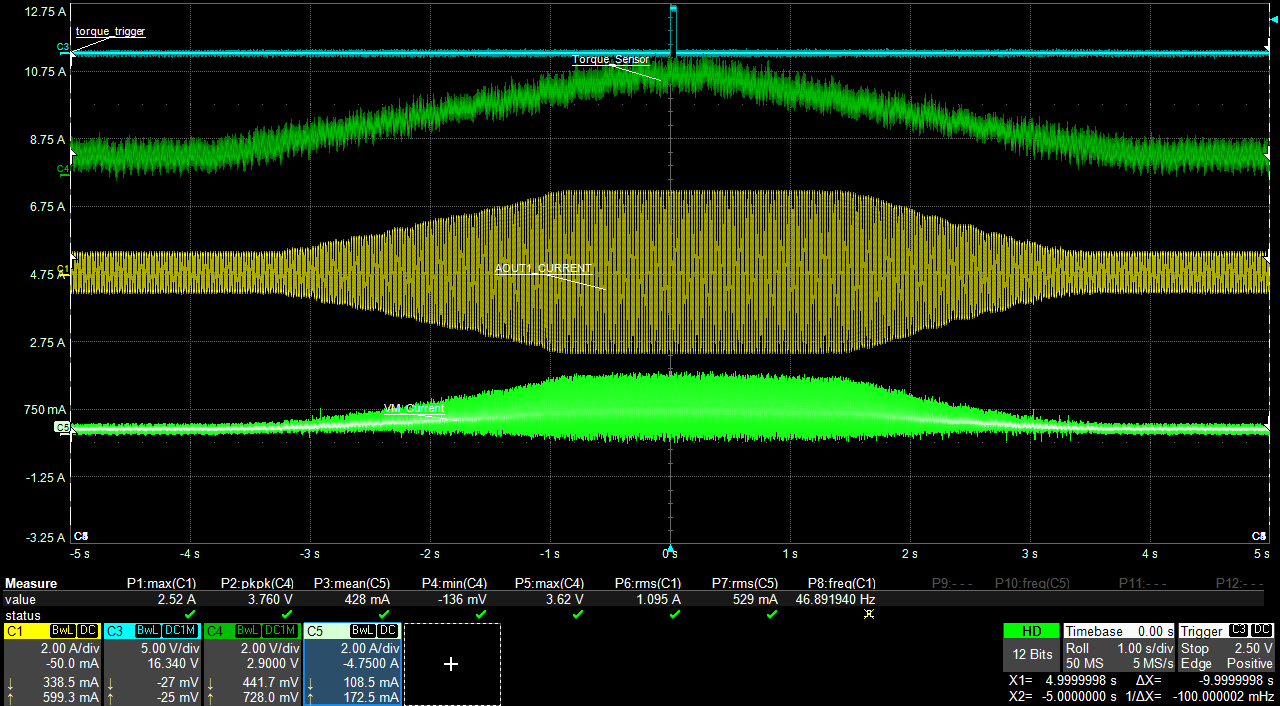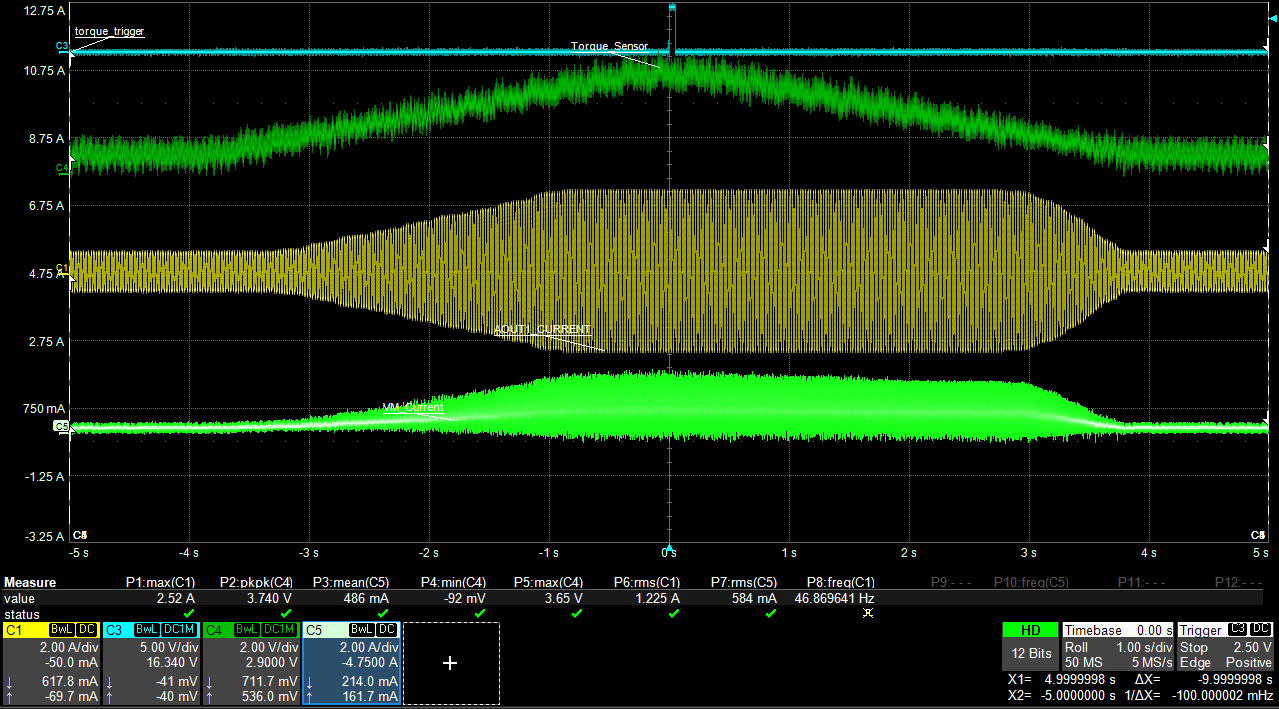SLVAFF1 January 2023 DRV8452 , DRV8462
PRODUCTION DATA
- Abstract
- Trademarks
- 1Power Efficiency of Stepper Motor Drivers
-
2Auto-Torque
- 2.1 Auto-Torque: Learning Principle
- 2.2 Current Control
- 2.3 PD Control Loop
- 2.4
Impact of Auto-Torque Tuning
Parameters
- 2.4.1 Impact of Learning Parameters on Load Transient Response
- 2.4.2 Impact of ATQ_UL, ATQ_LL Hysteresis
- 2.4.3 Impact of Load Profile on Power Saving
- 2.4.4 Adaptive ATQ_UL, ATQ_LL
- 2.4.5 PD Parameter Dependency Curves
- 2.4.6 ATQ_CNT at Different Motor Speeds
- 2.4.7 ATQ_CNT at Different Supply Voltages
- 2.4.8 Motor Temperature Estimation
- 2.5 Efficiency Improvement With Auto-Torque
- 3Case Studies
- 4Summary
- 5References
2.4.2 Impact of ATQ_UL, ATQ_LL Hysteresis
If the hysteresis band between ATQ_UL and ATQ_LL is widened by increasing the difference, it improves the immunity of the algorithm against system noise.
- As shown in Figure 2-12, smaller hystsresis means the response to load increase or decrease is similar.
- Figure 2-13 shows that larger hysteresis causes the current take longer time to reduce when load is reducing, leading to slower response to decreasing load, and slightly poorer efficiency. But it helps in situations where the load has noisy transients.
 Figure 2-12 ATQ_UL = 40,
ATQ_LL = 40
Figure 2-12 ATQ_UL = 40,
ATQ_LL = 40 Figure 2-13 ATQ_UL = 40,
ATQ_LL = 20
Figure 2-13 ATQ_UL = 40,
ATQ_LL = 20